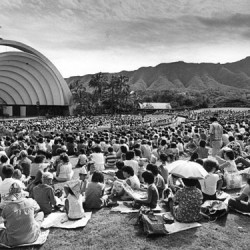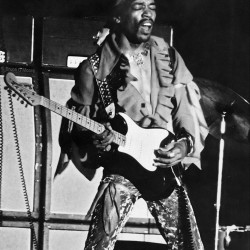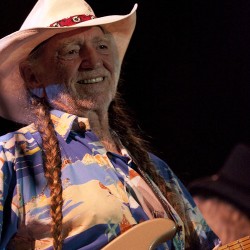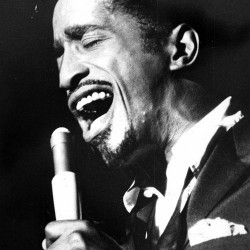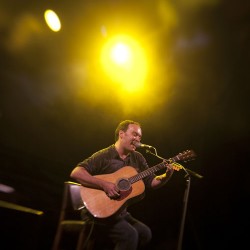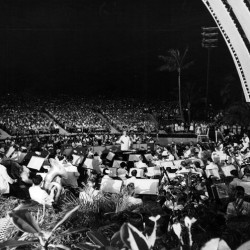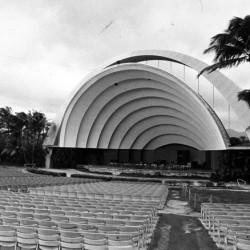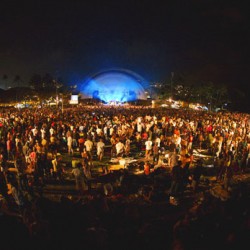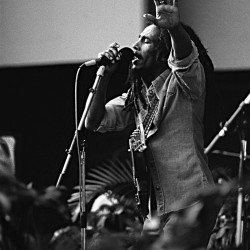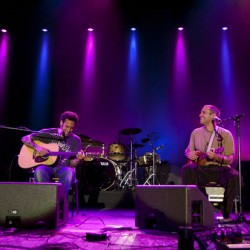See the Shell
The history of this open-air amphitheater in Kapi’olani Park is closely tied to the Waikiki Natatorium War Memorial.
If one searches for seashells on the beaches of the Hawaiian Islands, the best places are thought to be Hanalei Bay on Kaua’i, Hapuna Beach on Hawai’i Island, and Keawakapu Beach on Maui. Ni’ihau, the Forbidden Island, is especially famous for her tiny, gem-like shells or pupu artfully strung into lei by skilled hands. The island of O’ahu is not necessarily thought of as one on which to locate an abundance of seashells, as beachcombers will not find many shells strewn along the water’s edge. However, a mile or so back from Waikiki Beach, a great, white shell rises 70 feet into the sky with the iconic Diamond Head as the backdrop.
The Waikiki Shell stands as a unique venue for outdoor concerts, gatherings and graduations. Located within Kapi’olani Park, the Shell accommodates 2,400 people with the lawn area offering seating for up to 6,000 more. The Waikiki Shell features a sizable stage and sophisticated lighting and acoustics, which include a state-of-the-art sound system, along with all the necessary accommodations for world-class performances.
The elegant seashell design was the brainchild of famed American architect Lewis Parsons Hobart. Born in 1873, Hobart would play a major role in rebuilding the San Francisco Bay area after the 1906 earthquake. Originally, Hobart envisioned the island’s open-air amphitheater as part of his plans for the Waikiki Natatorium War Memorial, which Hobart designed along the shoreline as a living tribute to the soldiers lost in World War I and to honor all “men and women who served during the great war.” A 1923 article entitled “Temple of Music and Water Coliseum, Memorial Park, Waikiki Beach, Honolulu” details Hobart’s grand oceanside vision.
- PHOTO: HONOLULU STAR-ADVERTISER
- JIMI HENDRIX 1969. PHOTO: BRUCE C MOORE
- WILLIE NELSON, KOKUA FESTIVAL 2006
- SAMMY DAVIS JR. 1962. PHOTO: HONOLULU STAR-ADVERTISER
- DAVE MATTHEWS, KOKUA FESTIVAL 2008. PHOTOS: BRIANBIELMANN.COM
- WAIKIKI SHELL 1960. PHOTO: HONOLULU STAR-ADVERTISER
- PHOTO COURTESY KOKUA HAWAI’I FESTIVAL/BRUSHFIRE RECORDS
- BOB MARLEY 1979. PHOTOS: BRIANBIELMANN.COM
- BEN HARPER AND JACK JOHNSON, KOKUA FESTIVAL 2006
An island-based commission selected Hobart’s design for the memorial based on the way it reflected “the highly individual color and flavor of Hawai’i and Honolulu.” Although the placement of the amphitheater would be blocks away from the Natatorium, the Waikiki Shell displays this same commitment to the distinct nature of the Hawaiian Islands. The building of the Shell began in 1952, and, in 1956, the venue was made available for visitors and residents alike to enjoy twilight concerts accompanied by easy tradewinds.
The Shell opens toward the ocean, a design detail that stands not only as a tribute to the ocean-faring traditions of the Hawaiian people but also as a practical design feature. Tradewinds typically come from the northeast, often bringing rain with them. Because of the direction the Shell faces, performers stay dry. Built upon land that once was part of King Kalakaua’s track for horse racing, the Waikiki Shell was envisioned as a place to celebrate the music of the islands and from around the world.
The Kodak Hula Show, an island tradition from 1937 to 2002, spent the last 30 years of its run on the stage of the Shell as a principle music and hula production highlighting and celebrating the culture of these Hawaiian Islands. On the night the Shell opened its doors to the public, in September of 1956, the very first performer was high school piano virtuoso and solo-ist Ernest Chang, with the Honolulu Symphony Orchestra.
Billed as a place to “see the stars under the stars,” Frank Sinatra performed at the Waikiki Shell in 1960 as a fundraiser for John F. Kennedy’s candidacy for president. That same year, vice-president Richard Nixon presented a speech at the Shell focusing on his own run for the office. Other performers throughout the years have included Jimi Hendrix, Cat Stevens, Bob Marley and the Smashing Pumpkins. Local bands, now known worldwide, Pepper and The Green have performed at the Shell, and other fresh local talent joined up for events like the annual KCCN Birthday Bash for over two decades. From 2005 to 2010, the Waikiki Shell was also the venue for Jack Johnson’s Kokua Festival, a festival coupled with the Kokua Foundation, a foundation created by Jack and wife Kim Johnson to support environmental education within schools and communities in Hawai’i and beyond.
When one thinks of Hawaiian seashells, images come to mind of the tiny colorful pupu of the Ni’ihau shell lei and the impressive conch or pu as it is sounded in traditional Hawaiian ceremonies. In just a few minutes walk toward Diamond Head, one can step away from the shores of Waikiki Beach and find the most aesthetically charming shell of all—the Waikiki Shell. Nowhere else in the world can one experience, with wide-eyed wonder, such a spectacular venue for outdoor entertainment.




